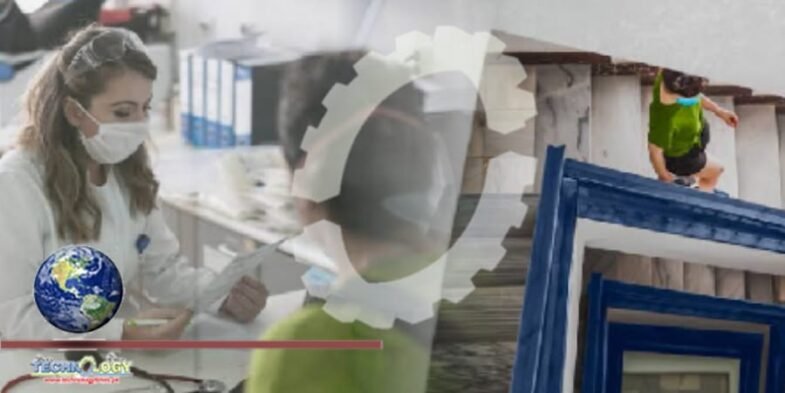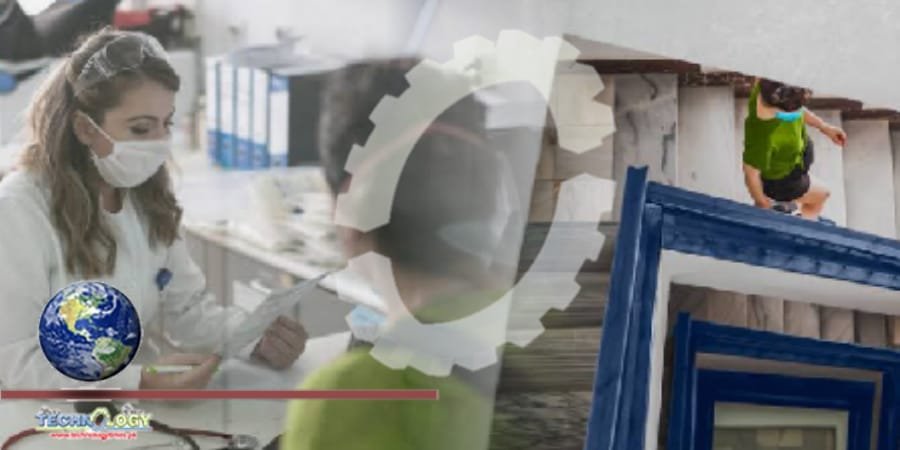A recent study, which appears in the journal Radiology, examined the effect of long COVID on the lungs and found potential long-term effects on lung function.The researchers found evidence of small airway disease on chest scans in people who had persistent symptoms after SARS-COV-2 infection, regardless of infection severity.

Longer-term follow-up is necessary to determine the lasting clinical consequences of the findings.People with COVID-19 often experience various symptomsTrusted Source depending on the severity of their illness. Symptoms appear 2–14 days after exposure to the SARS-CoV-2 virus and last 1–4 weeks on average.It has been difficult to estimate the prevalence of long-term symptoms following SARS-CoV-2 infection, partly because diagnostic criteria remain unclear.However, last year, the Office for National Statistics published data suggesting that long-term symptoms occur in 7–18% of people who experienced symptomatic COVID-19.
These long-term effects after COVID-19Trusted Source are known as long COVID or post-acute sequelae of COVID-19 (PASC).PASC can range from mild to debilitating, with new symptoms arising or evolving long after the initial infection.Dr. Brett M. Elicker, M.D., a clinical professor in the Department of Radiology and Biomedical Imaging at the University of California, San Francisco, discusses radiology findings in an editorial that accompanies the recent research.Dr. Elicker explains that the long-term effects of viral pneumonia depend on the direct injury that the virus causes and the body’s immune reaction to the virus. Damage to the lungs occurs in two patterns:
Constrictive bronchiolitis, or small airway disease: Inflammation within the bronchioles — the small airways — and surrounding areas results in airway narrowing due to scarring or fibrosis.Diffuse alveolar damage (DAD): Fibrosis to the alveoli — tiny balloon-shaped structures at the end of the bronchioles that exchange gas in the lungs — which may improve over time, but often some scarring remains.He was responding to a study that used CTTrusted Source scans to image the lungs of people with persistent symptoms following confirmed SARS-CoV-2 infection. The scans showed air trapping, which indicates small airway disease.Air trapping refers to pockets of air that become trapped in the lung after breathing out. In other words, they prevent the individual from exhaling completely. Air trapping is common in conditions such as asthma and chronic obstructive pulmonary diseases.
Researchers from the University of Iowa recently conducted a study to understand the long-term effects of COVID-19 on lung function. They published their findings in the journal Radiology.The study enrolled 100 adults with a confirmed SARS-CoV-2 infection who remained symptomatic for more than 30 days following the diagnosis, with a control group of 106 healthy participants.In all, 67% of participants with PASC had not needed hospitalization for COVID-19 — the authors refer to these participants as ambulatory. Additionally, 17% required hospitalization, and 16% needed intensive care during the initial infection.
Alongside a chest CT scan, the researchers performed several pulmonary function testsTrusted Source to measure how well the lungs worked.The average percentage of the total lung that air trapping affected was significantly higher in the ambulatory (25.4%), hospitalized (34.6%), and ICU (27.3%) than the healthy controls (7.2%).Also, the average percentage of the total lung with GGO was significantly higher in the hospitalized (13.2%) and ICU groups (28.7%) than the ambulatory group (3.7%), but higher in the ambulatory group than the healthy controls (0.06%).Dr. Alejandro P. Comellas, M.D., senior author and professor of internal medicine in the Division of Pulmonary and Critical Care Medicine and the Carver College of Medicine, University of Iowa, Iowa City, spoke with Medical News Today.He stated that the strengths of the trial were its design and inclusion of only nonvaccinated participants, which reduced confounding effects.However, it was a small single-center trial that involved only the initial SARS-CoV-2 variant, limiting the generalizability of results to subsequent variants.
Dr. Comellas stated, “The results provide evidence, quantitatively and qualitatively, of airway damage many months after the initial SARS CoV-2 infection, including patients who were initially treated in the ambulatory setting.”“Despite expected pulmonary functions tests in the ambulatory patients,” Dr. Comellas continued, “30% of their lungs had evidence of small airway disease.” As he explained, for some of the participants, this was more than 6 months after the initial infection.“This paper suggests that airway obstruction and post-organizational pneumonia [or] DAD fibrosis contribute to persistent symptoms after [SARS-CoV-2] infection with the contribution of airways disease higher in the outpatients, and the contribution of OP [or] DAD greater in the patients admitted to ICU.”“Longer-term studies assessing the clinical and imaging manifestations 1–2 years after the initial infection are needed to fully ascertain the permanent manifestations of post-COVID fibrosis.”
For many people, long COVID has associations with serious neurological and neurocognitive impairments, a phenomenon sometimes known as neuro-COVID. Why does this happen, and who is most at risk? In this Special Feature and podcast, we speak to two researchers and a person with lived experience of neuro-COVID to find out more.All data and statistics are based on publicly available data at the time of publication. Some information may be out of date. Visit our coronavirus hub and follow our live updates page for the most recent information on the COVID-19 pandemic.“Pointy orange things, and of course, they’re carrots. I was just struggling to search for the names of things.”This is Dr. Kerry Smith, a family doctor from the United Kingdom, talking about her post-COVID symptoms. She has not worked for the past 18 months since contracting COVID-19 from a patient who had returned from Wuhan, China, with a fever and persistent cough.
“The thing that’s really preventing me [from] going back to work as a [family doctor] is my cognitive issues or brain fog. Ummm [silence] Sorry, sorry, that’s it, you see, I lose my train of thought, Hilary [interviewer’s name, ed.], that’s the problem. With, with my brain fog, I have problems concentrating, keeping up with conversations, multitasking. I lose my train of thought easily. And I have difficulties with my memory.”
Source:Medicalnewstoday
